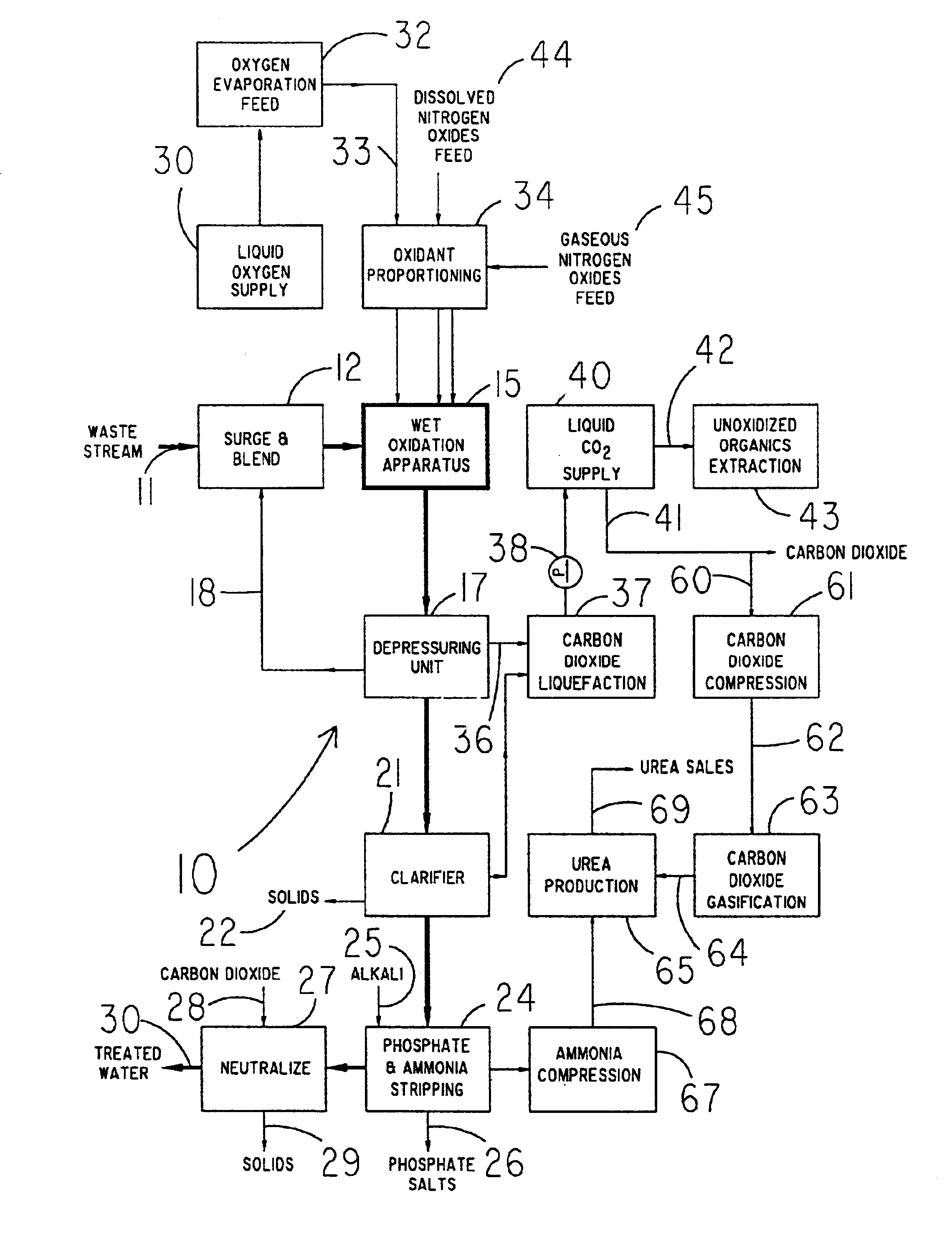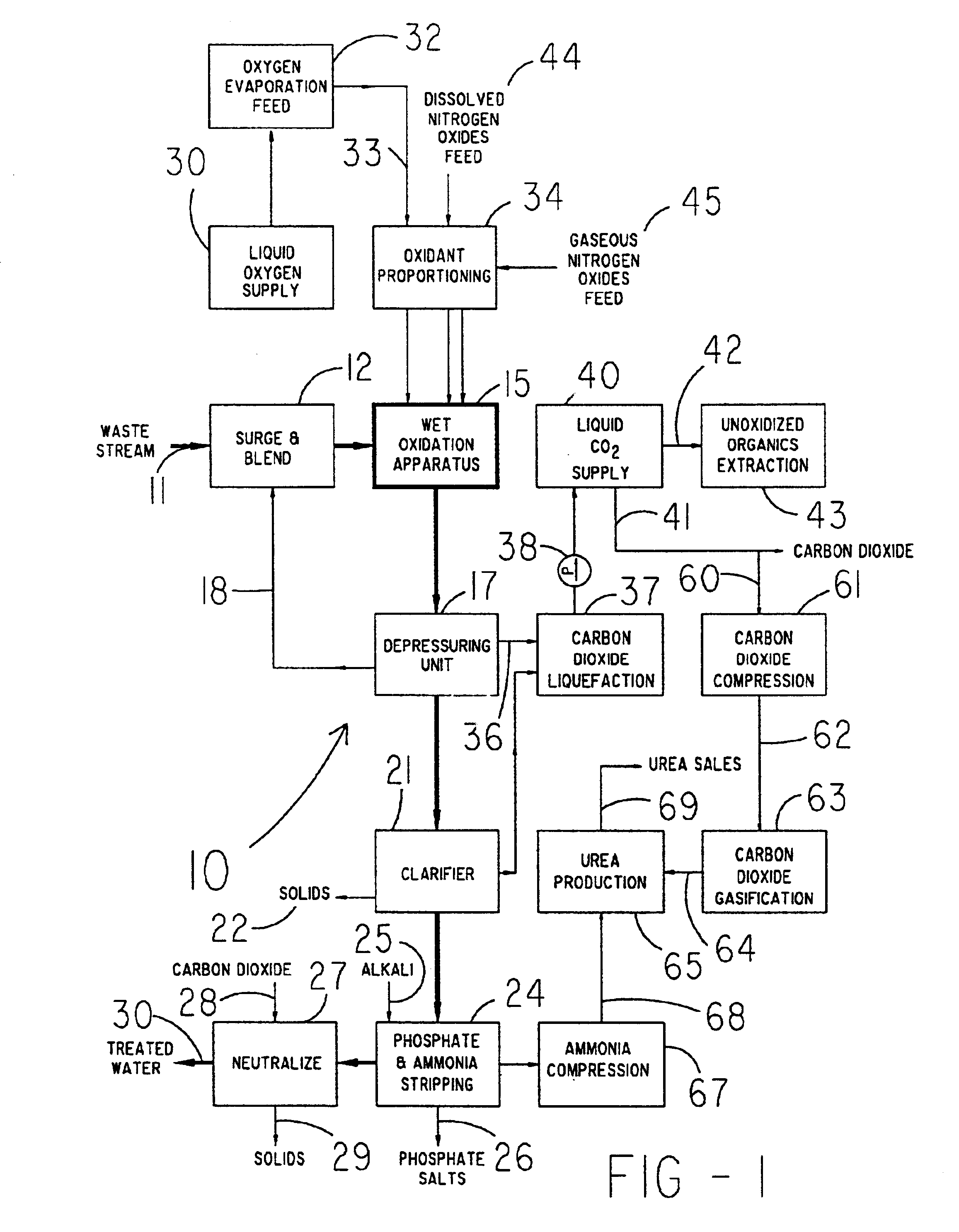Method and apparatus for treating waste streams
a technology for treating waste streams and waste water, applied in the direction of water/sewage treatment by degassing, sludge treatment by oxidation, application, etc., can solve the problems of inconvenient use, high cost, and inability to meet the requirements of a gravity pressure vessel,
- Summary
- Abstract
- Description
- Claims
- Application Information
AI Technical Summary
Benefits of technology
Problems solved by technology
Method used
Image
Examples
Embodiment Construction
The overall process and apparatus of this invention can be described with reference to FIG. 1. Those skilled in the art appreciate that appropriate pumping devices and conduits can be employed to move material between the various stages of the system and that this process and system can be maintained in a continuous operation.
The preferred material to be treated by the process and apparatus of this invention is the sludge waste byproduct that is produced by municipal waste water treatment plants. These sludges vary in composition based upon the location of the wastewater treatment plant and the time of the year. In general, however, the sludges include from about 1 to about 4.5 weight percent suspended solids, although greater variations may be found in some municipalities. The suspended solids may include, for example, biomass, suspended minerals, detergents, ashes, metal oxides, soil particles, inert materials, sand grains, polymers, food wastes, phosphates, nitrogen, and the like...
PUM
| Property | Measurement | Unit |
|---|---|---|
| pressure | aaaaa | aaaaa |
| temperature | aaaaa | aaaaa |
| pressure | aaaaa | aaaaa |
Abstract
Description
Claims
Application Information
 Login to View More
Login to View More - R&D
- Intellectual Property
- Life Sciences
- Materials
- Tech Scout
- Unparalleled Data Quality
- Higher Quality Content
- 60% Fewer Hallucinations
Browse by: Latest US Patents, China's latest patents, Technical Efficacy Thesaurus, Application Domain, Technology Topic, Popular Technical Reports.
© 2025 PatSnap. All rights reserved.Legal|Privacy policy|Modern Slavery Act Transparency Statement|Sitemap|About US| Contact US: help@patsnap.com



